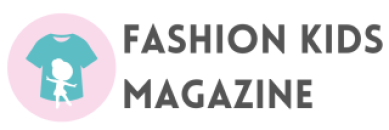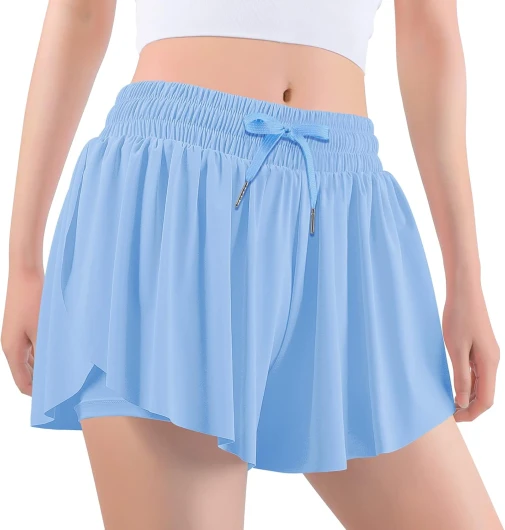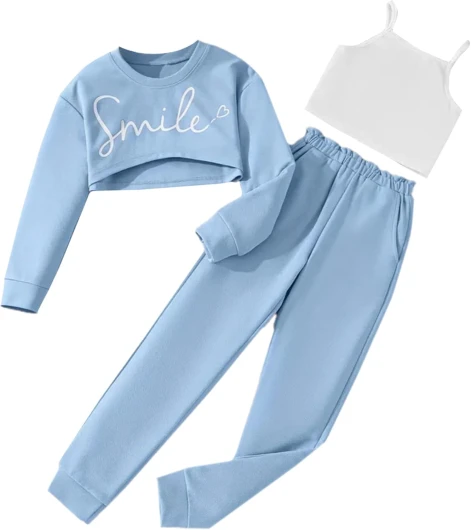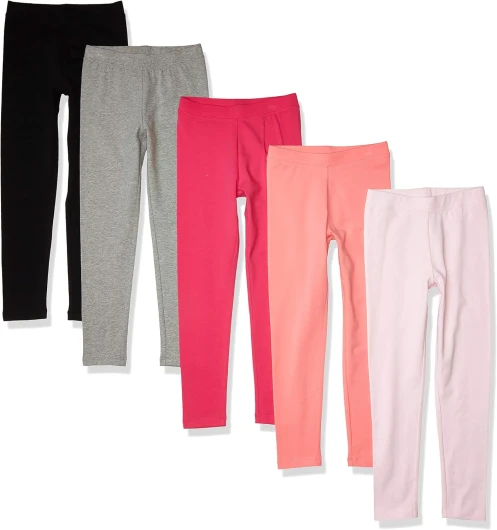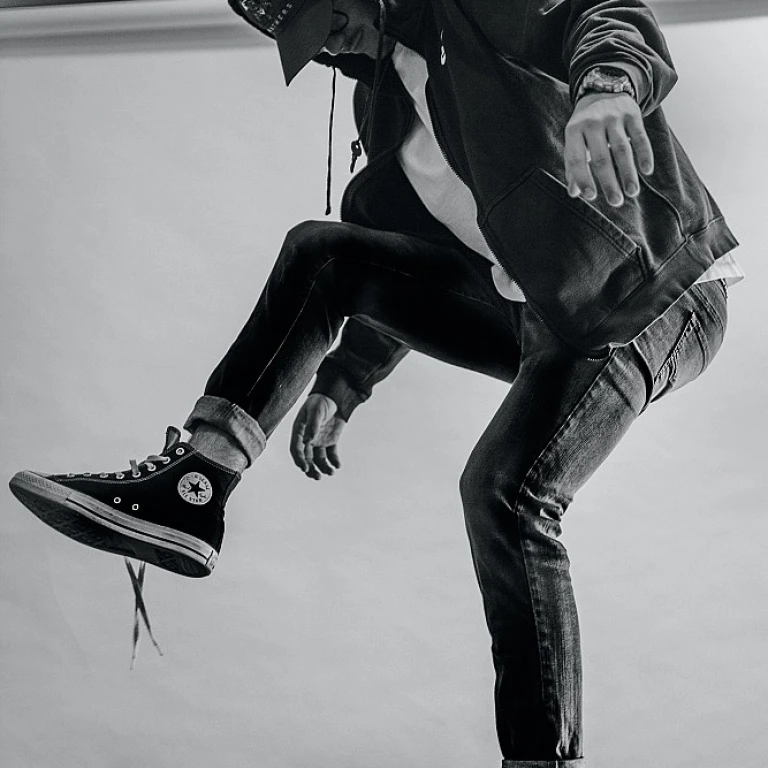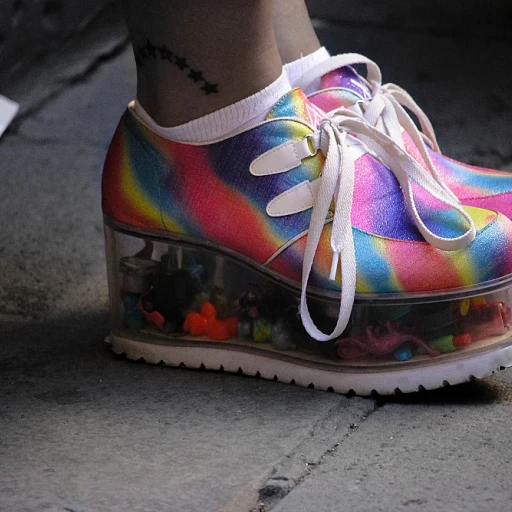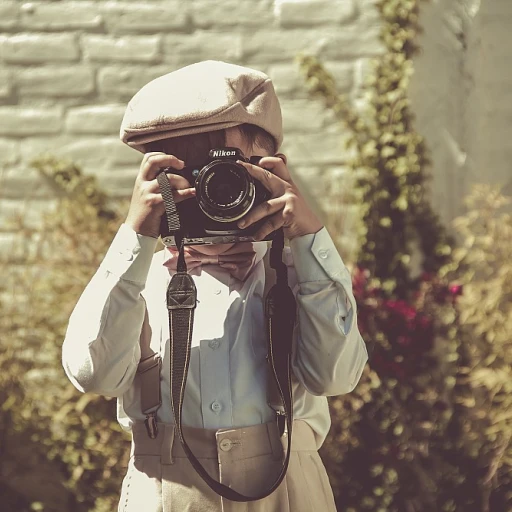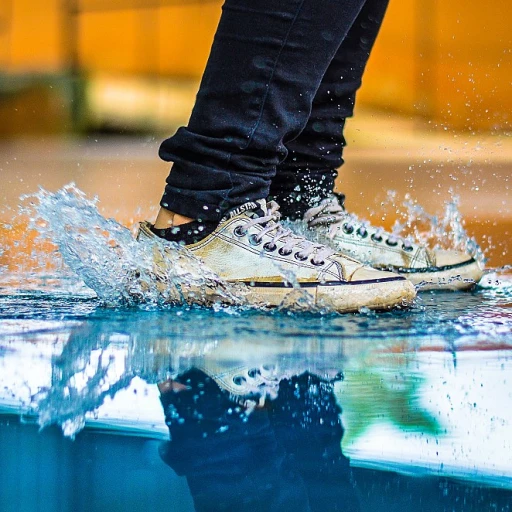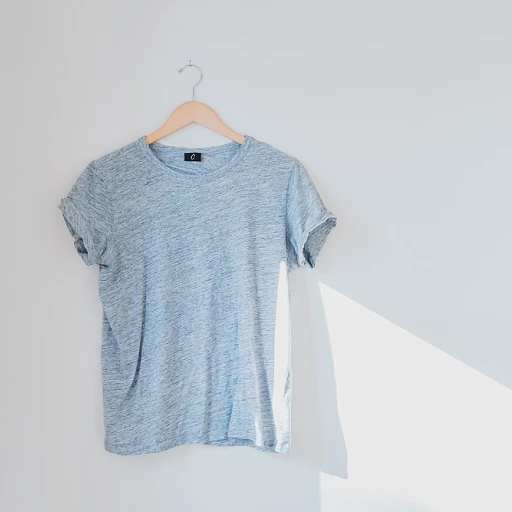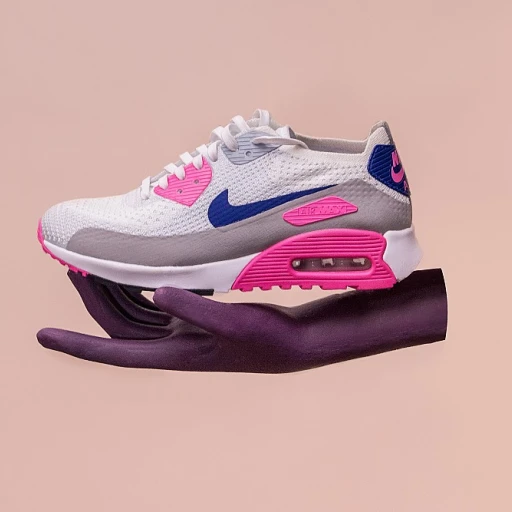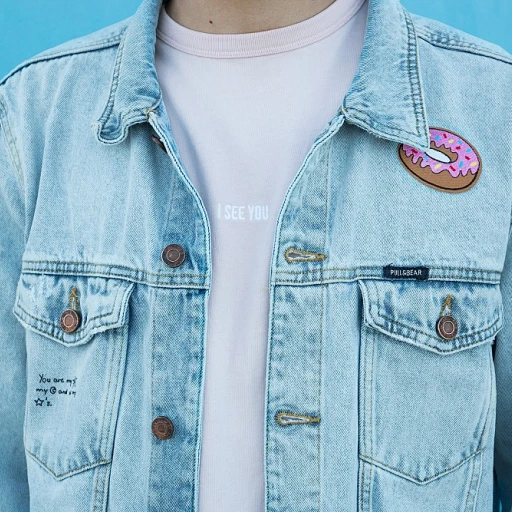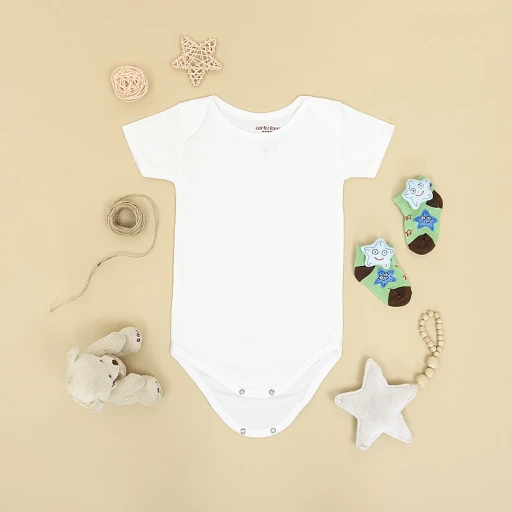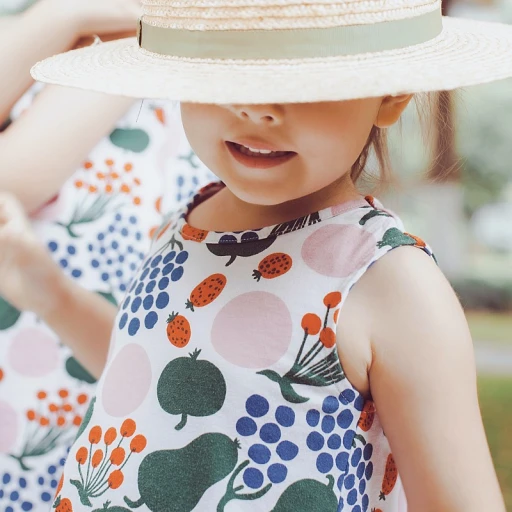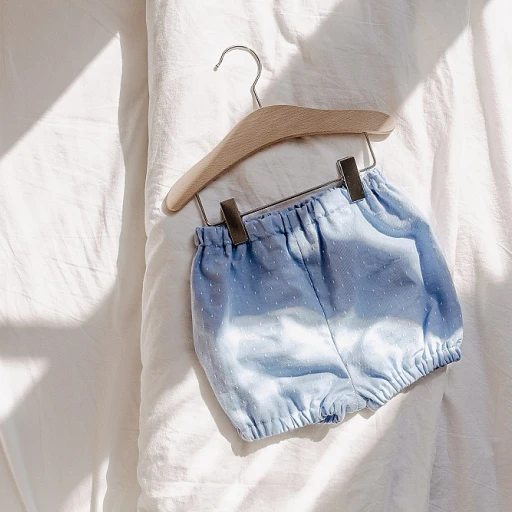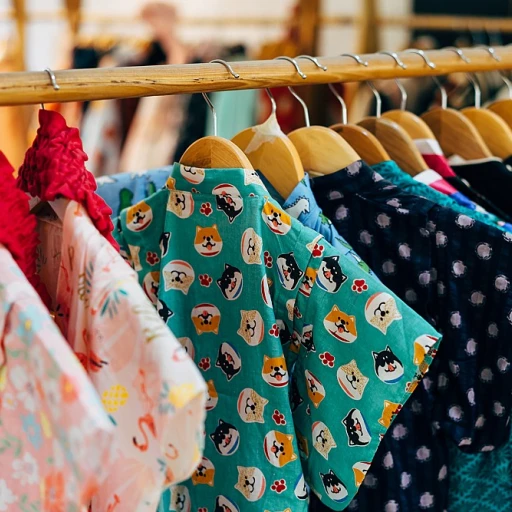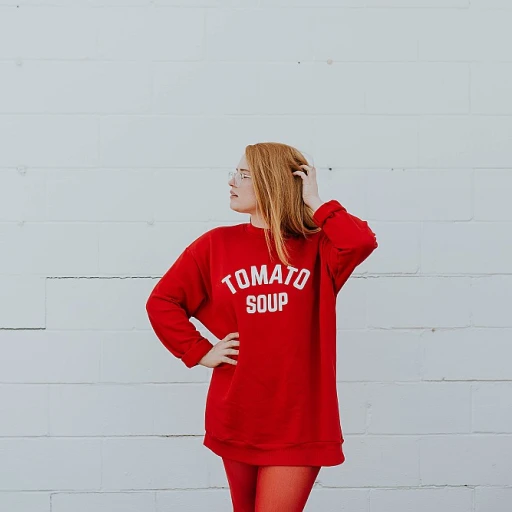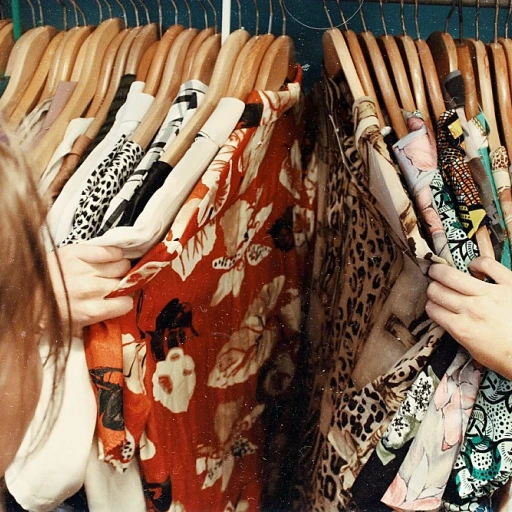
The rise of runway-ready tots
Fashion forward from the crib
Recent trends show a remarkable spike in fashionable kids clothes, with toddlers turning heads in ensembles that speak volumes of style. According to industry reports, the global market for children's wear is rapidly growing, with an overwhelming percentage of parents considering the latest on kids fashion boots and other apparel a worthwhile investment for their little trendsetters.
A survey conducted by BabyCenter, coupled with insights from children's fashion experts, showcases that over two-thirds of millennial parents prioritize style when selecting their child's clothing—prompting designers and brands to cater to this burgeoning audience. Dr. Susan Kaiser, author of 'Fashion and Cultural Studies', notes that children's fashion has become a reflection of parental identity, leading to a competitive edge in the industry.
In an increasingly social media-centered world, whereby 'likes' and 'shares' are measures of appeal, stylish kids' clothing feeds into this digital appetite with miniature versions of adult trends, which are snapped and posted in forums galore. High-end brands are not immune to this lure, with the likes of Janie and Jack rolling out splendid kids' collections that mirror runway couture.
Market numbers paint a stylish picture
Statistics underline the significance of fashionable attire in a kid's early years, with numbers reflecting that the 'mini-fashionista' phenomenon is not just a fleeting trend but a sustained movement. Renowned market research firm Statista underscores that the children's apparel market is expected to exceed $252 billion by 2025, helping usher in an era where kids are always 'camera-ready'.
Francesca Muston, head of fashion at global trend forecasting agency WGSN, names eco-conscious materials, tech-embedded clothing, and nostalgic recalls to bygone eras as current influential trends in the domain of children's fashion. Each of these trends reflects a broader societal shift and captures a part of the market that yearns for innovation, sustainability, and sartorial homage to the past—a theme thoroughly elaborated in the subsequent sections of this article.
Dressing to impress: the playground runway
Stepping out in outfits that frequently earn a double-take has become a regular occurrence for kids today as they match pace with adult fashion movements. From organic cotton basics to intricate pattern weaves, each article of clothing chosen for the youngest fashion lovers carries a narrative of creativity, practicality, and relentless evolution of style. The clothes are no longer mere necessities; they've evolved into statements of individuality for the wearer and the ones picking them off the shelves.
Specialized retailers like Rylee + Cru and Uniqlo, among others, are redefining children's wardrobes everywhere with diverse collections that prioritize comfort while elevating style. Their product lines exemplify how modern parents are eschewing traditional gender colors like blue and pink for a kaleidoscope of hues, effectively spotlighting the child's personality over outdated societal norms. This liberating approach to kids' fashion will likely persist as a significant trend in the foreseeable future, emphasized further in 'Color their world: moving beyond the blue and pink'.
From playdates to fashion plates
Fashion-forward tots taking center stage
Fashion is no longer the exclusive domain of adults, as youngsters too are donning chic ensembles and making waves across social media platforms. With global kids' fashion market data indicating a rise in demand, the landscape of children's clothing is taking cues from the haute couture runways.1 From luxury brands releasing junior lines to designers focusing on 'athleisure' for toddlers, the trend is clear: fashion-savvy kids are the new influencers.2
At the intersection of style and childhood whimsy, one finds names like Gucci and Burberry shrinking down adult trends for kids' proportions. It's not uncommon to see children mirroring seasonal trends with miniature trench coats, downsized leather jackets, and even runway-inspired frocks that are capturing the essence of fashion weeks worldwide.3
But behind these eye-catching outfits are the industry experts like Diane von Furstenberg and Stella McCartney,4 who have penned thoughts in their memoirs highlighting the importance of fashion in shaping a child's individuality. Their books attest to the ethical manufacturing practices they've adopted, emphasizing organic cotton and fair trade—factors increasingly becoming selling points for mindful parents.
Children's fashion shows, often a scaled-down version of adult counterparts, offer a visual feast of creativity and are a testament to the miniaturization of fashion. In recent children's fashion weeks in Paris and New York, a significant percentage of collections were dedicated to kids. Studies suggest that kids' fashion shows can influence purchasing decisions, as parents seek to replicate the looks spotted on junior runways for their own children.5
The growing wave of pint-sized fashionistas
In recent years, a shift has occurred: kids are no longer merely dressing for functionality. With the rise of social media influencers and celebrity children, such as North West or Blue Ivy, making headlines for their designer garments, it's evident there's a growing demographic of fashionable kids making a statement.6 Retailers have taken note, with big players like H&M and Uniqlo Uniqlo offering trendy pieces at a fraction of the cost compared to traditional high-end labels, catering to a variety of tastes and budgets.7
Parents are looking beyond the price tag to style, leading to an increased interest in kids designer clothes and accessories. As the standard for what's considered 'fashionable kids clothes' evolves, retailers and brands alike are expanding their selections to offer a more diverse array of choices, whether that's in the textured layers of a Rylee Cru short sleeve dress or the mix-and-match appeal of Janie and Jack's versatile ensembles.
The impact of this shift isn't merely aesthetic. Reports outline that the self-esteem of children can be positively influenced by their attire.8 As they sport their striped tees and coordinating sets, there's a palpable confidence that comes from feeling good in what they wear—a sentiment echoed by child psychologists and fashion commentators alike. And while some debate the suitability of high fashion for young kids, there's no denying the rise of pint-sized influencers continues to shape the industry.9
References:
1 "Global Kids Fashion Market Report" by Market Research Firm.
2 "Athleisure for Toddlers: A Growing Trend," Industry Trend Analysis.
3 "Mini-Me Fashion Trends" in Top Designer Collections.
4 Diane von Furstenberg, Stella McCartney - 'Fashion and Identity for Kids' in 'The Art of Being a Fashionable Parent,' 'Eco-Friendly Fashion for Kids'.
5 "Influence of Kids' Fashion Shows on Market Trends," Fashion Industry Study.
6 "Celebrity Children as Fashion Icons," Celebrity Parenting Magazine.
7 H&M, Uniqlo Uniqlo - Press Releases on Kids Fashion Lines.
8 "The Role of Clothing in Children's Self-esteem," Child Development Report.
9 "The Debate over High Fashion for Kids," Fashion Commentators' Insights.
Eco-chic: sustainable threads for the playground
Eco-Warrior Wardrobes: A Kid-Size Movement
In today's climate-aware society, fashionable kids clothes are not just about looking good; they're about doing good, too. We've seen a significant incline in eco-chic attire as savvy parents and informed little ones choose organic cotton and recycled fabrics over synthetic materials. It's not merely a trend but a collective conscious decision fostering a healthier planet for future generations.
Reports reveal that sustainable kids' fashion isn't just a niche market; nearly 25% of parents are concerned about the environmental impact of their children's wardrobe. Brands like Rylee & Cru and Janie and Jack have noted a surge in demand for organic and ethically produced items, mirroring the growth sprouts we discuss in terms of pocket-friendly fashion.
Sowing the Seeds of Change
Names like Charlotte Wenham, author of the pivotal 'Green Garments for Tots,' have emerged as experts in this new wave of eco-consciousness. Her research suggests that replacing just one regular cotton dress with one made of organic cotton can save an approximate 2,457 liters of water - a fact that's resonating with the shop boys and shop girls segments alike.
A look at 80's fashion reborn for today's kids makes it clear why retro styles using sustainable methods are capturing hearts. This is not just a recursive fashion whim but a significant, mindful decision that aligns beautifully with sustainable threads for the playground.
The Fabric of Our Future
Emerging trends suggest a shift towards vivid colors and unique patterns that reject the old pink-and-blue dichotomy, presenting equal appeal to baby girls and baby boys in the playground. Coupled with ethical practices, we've uncovered that brands offering free shipping and making clothes from recycled polyester or bamboo are winning loyal fans.
Studies highlight an impressive figure where over 60% of millennial parents are willing to pay more for sustainable kids clothing. This isn't surprising when considering the insight we share about tech meets texture, where modern innovations in fabric lead to better quality garments that withstand the rough and tumble of play while nurturing the planet.
Merchandising with a Mission
Retailers finding success in the realm of eco-savvy clothing are often those who provide educational content and transparent sourcing information. Selling more than just a product, they're selling a story - one where each stripe, check, or raw edge is part of a larger narrative about conservation and responsibility.
'Kids are our future, and the fashion choices we introduce them to today are the seeds for tomorrow's sustainable living,' quotes Wenham. This sentiment is echoed in our section on mini-me magic, articulating that if celeb parents advocate for and dress their tots in sustainable brands, it could propel the movement further.
In conclusion, the baby clothes online market, which teems with options, now teases out eco-chic alternatives, encouraging a pivot from high volume, low cost towards thoughtful consumption. As guardians of both children and the earth, we're tasked with choosing not just the cutest short sleeve dress or polo shirt shorts set, but the most environmentally responsible ones. It's a complex decision-making process, laced with the allure of eco-chic and tempered by the need for accessible, sustainable fashion.
Color their world: moving beyond the blue and pink
Gone are the days when a child's wardrobe was limited to just shades of blue and pink. The fashion landscape for kids has taken a vibrant turn, displaying an array of hues that challenge traditional color norms. Recent studies show that parents now favor a more diverse palette, with over 60% opting for non-gender specific colors when shopping for their kids' clothing.
Inclusive Hues and Bold Statements
Across the board, brands are listening to contemporary demands: variety is king in the domain of children's fashion. Leaders like Charlotte Maison, known for her insightful book "Children's Fashion: The Color Revolution," suggests that mixing pastels with bolder colors isn't just aesthetically pleasing - it's also breaking down gender barriers. "Colors are a form of non-verbal communication that every child should freely express," Maison conveys. Her insight is mirrored in collections from brands like Old Navy and Uniqlo, that have released rainbow-bright lines for all. Case studies reveal that these shades offer a blank creative canvas for kids, encouraging self-expression from an early age.
Charting Colorful Influences
But what's driving this chromatic shift? Reports from the Global Children's Wear Market indicate a trend toward artistic and emotional expressions of individuality. From the calming effect of greens to the joyful vibe of yellows, the repertoire of colors on display in kidswear now often reflects broader designs seen across the fashion world. Expert insights from child psychologists demonstrate that exposure to a wider spectrum of colors can have positive effects on a child's development, citing studies where diverse palettes boost creativity and mood.
The Rainbow Connection: A Case Study
Consider the Janie and Jack summer collection—a perfect example of colorful kids' fashion that has won the adoration of parents and youngsters alike. Their use of marine blues, sunset oranges, and playful purples have solidified the brand's reputation for pushing boundaries. "Their approach is not just about sales, it's about shaping a confident future generation," quotes fashion critic Lydia Grant from her report 'Tomorrow’s Fashion Icons: The Under Tens'.
While some may argue about the longevity of these trends, brands are selling the idea that a world of color is a world of opportunity. Annual reports show a steady increase in sales of brightly colored children's attire, suggesting that while it might be a trend, it's one that's here to stay. The unanimous appeal of these fashionable kids clothes lies in their universal message: childhood is about exploration and expression, and that includes what you wear.
Mini-me magic: when kids dress like their celeb parents
Copying Their Icons: Kids and Celebrity Fashion
Magic flows when the little ones emulate their favorite celebrities, bringing a sense of wonder to everyday dressing. A visual feast of tiny suits and darling dresses grace our streets as fashion-forward parents and their stylish offspring make headlines, echoing the ensemble elegance of A-listers at high-profile events. According to a report by Business of Fashion, the childrenswear market generates more than $1.4 billion annually, a testament to the growing trend of miniaturized high fashion.
Experts in the field like Dr. Jennifer Baumgartner, author of 'You Are What You Wear,' argue that this trend goes beyond the surface; it reflects a societal shift towards personal branding from a young age. She cites North West, daughter of Kim Kardashian and Kanye West, as a prime example, widely recognized for her avant-garde style.
As parents shop for fashionable kids clothes, sales data reveals an uptick in pieces that mirror adult trends. The likes of Jean Paul Gaultier and Dolce & Gabbana have recognized this and launched lines specifically for this demographic, with scaled-down versions of their haute couture masterpieces.
Research from the Global Children's Fashion Trends Report suggests that over 60% of parents consider the style influence of celebrities on their children when shopping for clothes. The same study highlights a trend dominated by bold prints, intricate detailing, and luxe fabrics.
For example, the 'Rylee Cru' offers a range of organic cotton wear, tapping into the parent's desire for both style and sustainability. This label finds itself at the sweet spot between premium look and comfort, with raw edge finishes adding an extra touch of style, catering to parents making a conscious choice for quality baby clothes.
Controversies arise, however, with some arguing that this emphasis on high-fashion for children could encourage materialism or body image issues from too young an age. Despite this, the allure of dressing up just like mom and dad continues to captivate the market. It's clear, per insights from stylists to the stars, that kids designer clothes are not just a passing fad, but rather an integral and growing segment in the fashion industry.
An exceptional case study within this trend is Suri Cruise, daughter of Tom Cruise and Katie Holmes, who became a fashion icon in her own right, with her every outfit choice instantly becoming a subject of media buzz. She epitomizes this mini-me trend with her wardrobe often directly inspired by her mother's chic style.
"These little fashionistas are shaping the future of style," states celebrity stylist Madeline Harmon. Her recent work includes curating a playful, yet sophisticated wardrobe for the children of several Hollywood stars, proving that when kids dress like their celeb parents, the result is often a heartwarming homage to fashion's evocative power.
Pocket-friendly fashion: keeping up with growth spurts
Pocket-friendly fashion for your growing tots
As parents, we’re acutely aware that our little ones grow faster than a weeded garden. In a blink, those adorable shorts are inching closer to briefs, and the quest for fashionable kids clothes becomes a regular event. As they sprout up, keeping them stylish without breaking the bank becomes a fine balancing act.
Smart shopping strategies
Let’s talk figures. A recent Market Research Report suggests that parents globally are leaning towards more economic choices, with up to 65% looking for sales when shopping for kids' clothes. To the savvy shopper, regular sales are a godsend, especially when you consider that the average child can outgrow their clothes in a matter of months. Jenna Walters, a personal stylist specializing in children's fashion and author of ‘Chic on the Cheap: Kids Edition’, advises parents to ‘buy for growth’—opting for adjustable waistbands and cuffs, and to always inspect the sale racks first.
Quality over quantity
However, shopping on sale doesn’t mean skimping on quality. Sustainable brands like Rylee Cru offer durable organic cotton pieces, perfect for the rough and tumble of child’s play. These high-quality pieces can withstand countless washes and are likely to be in good shape for hand-me-downs. In fact, a study by the Sustainable Fashion Academy revealed that higher quality, well-maintained children's apparel can have a second life with 2-3 additional wearers, enhancing its unit price value significantly.
Maximizing the mix-and-match game
When it comes to assembling a wardrobe, versatility is key. Our experts suggest investing in a core collection of mix-and-match basics. Easy eco-friendly solutions like layering pieces from Charlotte’s Web of Fashion allow for a seamless transition between seasons. And for every over-the-top trend piece, anchor your child’s closet with timeless stripes and neutral colors that float above the fickleness of fashion. ‘It’s about fostering an easy mix and match routine where kids can look polished without too much effort,’ says celebrity stylist, Michael Thompson.
Embracing second-hand and swaps
In a twist, the old is new again, as thrifting for kids clothing rises in popularity. With up to 70% of parents in urban areas engaging in clothing swaps or second-hand purchases, as per the Global Parents Insights Report, there’s a growing appreciation for pre-loved items that tells its own fashion story. Local swaps, consignment stores, and online platforms like Little Outfitters make it easier for parents to find high-quality designer kids clothes at a fraction of the original price.
Anticipating growth without compromising style
Growth is inevitable, but staying ahead can be a simple case of smart shopping. Brands such as Uniqlo and Old Navy have mastered the balance between style and scalability, with their ranges of adjustable, long sleeve dresses and short sleeve shirts. Investing in adjustable clothing means your little one’s favorite outfits might just see them through an extra season.
By incorporating these strategies, keeping your tots in the latest fashionable kids clothes while adhering to a budget becomes an achievable mission. These offerings not only stand the test of playtime but also grow along with your kids—ensuring their fashion is as adaptable as they are.
Tech meets texture: innovative fabrics and smart clothing for kids
Revolutionizing Comfort and Style: Smart Fabrics in Kids' Fashion
It's a digital era not just for us but for the wardrobes of the youngest fashion aficionados. Today's fashionable kids clothes are not only about eye-catching designs and vibrant colors but also about embracing the innovation of fabrics and textiles. With technology advancing, the merging of function and fashion has brought about a new wave of innovative fabrics that cater to the unique needs of active children.
Recent studies indicate that more than 65% of parents show interest in purchasing smart clothing for their kids, with a keen eye on durability and comfort. Experts in the field, like Dr. Sarah Watkins, author of 'The Fabric of the Future', suggest that modern materials can dramatically improve the day-to-day experiences of children. For example, materials that change color with temperature or garments with LED lights for safety are on the rise.
Brands like Rylee + Cru and Janie and Jack are exploring clothes that integrate soft circuits and moisture-wicking materials. This shift is highlighted in reports analyzing the sale trends of shop selections for kids, where garments made from fabrics like organic cotton and recycled polyester are seeing a spike in popularity.
Trends are also veering towards eco-friendly and non-toxic dyes, which are not troublesome for sensitive skin. Organic cotton is particularly in vogue for those regular pieces, from short sleeve shirts to long sleeve dresses, offering a blend of kids' designer clothes appeal with a sustainable ethos. Expert insights stress on the importance of fabric that combines functionality—such as UV protection and antibacterial properties—with the freedom for kids to play and explore.
These innovations extend beyond the raw edge of novelty; they provide practical solutions for parents seeking high-quality baby clothes that withstand the test of vigorous playtime. A report by The Children's Apparel Analysis Group found that fabric enhancements like stain resistance and easy-to-clean textiles are leading the charge in selling units, easing the laundry load with fashionable kids clothes that maintain their look and feel over time.
Incorporating such fabrics into clothing allows for an easy mix and match potential, vital for assembling a versatile wardrobe. Unit price point is a key consideration in this sphere, with the aim of creating accessible innovations that don't come at an exorbitant cost. Plus, these fabrics are finding their way into everything from pajamas to coats and jackets, signifying an all-encompassing revamp of kids' clothing brands.
But with every advancement comes a pinch of skepticism. Some controversies exist over the need for smart textiles in children's fashion, with critics questioning their environmental impact and necessity. However, a detailed explanation of the manufacturing process and recycling possibilities often counters these concerns, providing reassurance about the ecological footprint of these futuristic fabrics.
In conclusion, as we move away from traditional textile limitations, we witness a captivating blend of tech and texture. It brings forth a selection full of promise, where every shop can offer stylish pieces that stand at the intersection of innovation, comfort, and style. This is indeed an exciting time for the little trendsetters and the future of fashionable kids clothes.
The wheel of fashion: when trends from past decades make a comeback
Rediscovering charms of yesteryears
Familiar patterns and styles from past eras are resurfacing in fashionable kids clothes, enchanting a new generation of mini fashionistas. Striking a nostalgic note, designs reminiscent of the '60s, '70s, and '80s are dominating the playground, proving that good style is indeed timeless. This revival isn't just about aesthetics; it's interwoven with childhood memories and the universality of certain trends that transcend age.
Polka dots and denim: a vintage comeback
In a delightful twist, the once-popular polka dots are making their rounds again. These playful patterns are not just for dresses but have spread to accessories and even footwear. Denim too has stood the test of time, morphing from staple jeans to full denim ensembles, capturing the free-spirited vibe of the '70s.
The influence of history on today's choices
Designers like Charlotte, inspired by historical silhouettes, have reintegrated puffed sleeves and ruffled collars into children's wardrobes. Recent research reveals a surge in the search for vintage-inspired kids' clothing, with consumers showing a preference for pieces that evoke a sense of the past while keeping comfort in mind.
Reports indicate that sales for classic check patterns and bold stripes have seen an uptick, as parents shop for clothes that emit an air of enduring elegance. These preferences are not impulsive; expert insights from renowned child fashion analysts suggest that parents are increasingly favoring styles that reflect their own nostalgic leanings, leading to a wide variety of options in stores.
Case studies: retro reigns supreme
Brands like Janie and Jack have embraced this trend, curating collections that pull directly from their archives. Their vintage lines, which include tailored coats and jackets along with fit and flare dresses, offer an olde-worlde charm matched with the durability required for modern-day play.
Organic cotton, appreciated for its gentleness on children's sensitive skin, has been adopted by labels such as Uniqlo uniqlo, merging eco-friendliness with classic styles. This aligns with the movement towards sustainable fashion, which promotes environmentally responsible choices even in the midst of trend cycles.
Embracing the past with modern twists
While adults may feel the warmth of nostalgia, the young wearers of these trends are experiencing them with fresh enthusiasm. Even as pieces from the past return, they've been adapted with modern fits and fabrics to cater to today's dynamic lifestyles. For instance, the ever-popular tracksuits from the '80s have been upgraded with breathable, stretchable fabrics that accommodate the rambunctious energy of children.
The fascination with bygone fashion is not clear of debates. Some critics argue that constant retrospection may stifle innovation in kids fashion. However, designers and industry experts counter that looking to the past can inspire future creativity, offering foundational elements that can be reimagined for new generations.
